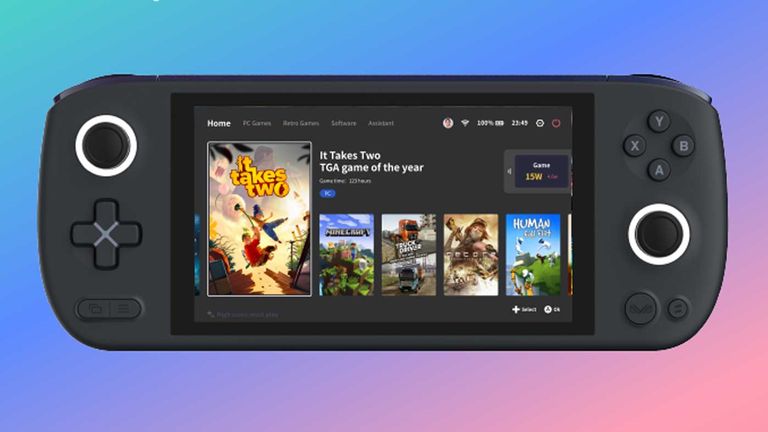Video game consoles are getting bigger and bigger.
initial release version game station The 5 weighs 4.5kg, almost double its predecessor (2.8kg).
This Xbox The Series X is so big that many people on the internet are joking about it being the size of a mini fridge – leading to Microsoft Build a mini fridge in the shape of a true console.
But as technology improves, it inevitably becomes miniaturized as more batteries, processing power and memory are crammed into a smaller phone or laptop case.
The same applies to video games.
Nintendo When the Switch was released, it blazed the trail for handheld hybrid gaming, and it became the fastest home console with 100 million units sold in 2021.
Its ability as a traditional TV console and portable device attracted customers faster than it could be produced.
Now, competitors like Steam Deck are breaking into the portable gaming market, with better graphics cards, storage and processors.
Aya is a company that launches portable PCs in the summer.
The Chinese company’s flagship Neo Air Pro has up to 30GB of RAM, decent battery life, and a powerful graphics card, enough to run the latest hit games on the commute.
When Sky News tested it, games like Overwatch, Call of Duty, and FIFA performed well at 60 frames per second on lower graphics settings. The device also has a USB-C output that can connect to a physical keyboard, mouse, and monitor, and turn this supercharged Game Boy into a desktop gaming PC.
Will video games have their own Netflix?
But mobile is also getting a boom in gaming.
The advent of Netflix-like game streaming allows gamers to run the most graphics-intensive versions on the market on mid-range smartphones.
Your iPhone may have traditionally been used to play classic games like Clash of Clans or Farmville, but now it can stream big PlayStation or Xbox games over a 5G connection.
Xbox, PlayStation and Google (at least now) provides cloud streaming services that allow gamers to play supported games over the Internet.
Sky News tested the Xbox cloud streaming app installed on Oppo’s flagship folding smartphone, the Find N.
The phone’s OLED screen (made by the same manufacturer that makes Samsung’s foldable display) folds to twice the size of the original screen, which definitely improves gaming on the go.
Using a stable EE 5G connection, we were able to stream Forza Horizon 5, one of the most graphically demanding games on the market, with virtually no lag.
If broadband and data speeds improve in the UK, cloud gaming could become the medium of choice for gamers.
However, the format took a hit recently when Google announced it was shutting down its Stadia service.
It was one of the first services of its kind to launch in the UK, but it failed to generate enough interest from players to keep the Silicon Valley giant going.
Read more tech news:
We interviewed Google’s latest AI chatbot
The future of Twitter under Elon Musk
“Cloud gaming is the future”
Mike Rose, founder of game publisher No More Robots, who recently had to drop his Stadia version of Football Story, told Sky News: “I think it’s been a while since this… It’s going to die at some point. It’s more of a question of when.
“I’m very confident that cloud gaming will be the future of video games.”
Mr Ross said cloud services like Xbox were more likely to survive because they offered a more diverse offering: “The problem with Stadia is that it’s trying to open a whole new store that’s entirely cloud-focused, rather than having people Use a little bit of cloud gaming.”
In a vote of confidence, No More Robots will have about six games coming to Microsoft’s xCloud over the next 12 months.
According to the government, 68% of premises in the UK now have access to gigabit broadband, with a goal of achieving at least 85% gigabit coverage nationwide by 2025.
The pace of adoption of the growing Netflix-like cloud gaming offering will largely depend on whether such infrastructure goals are met.

